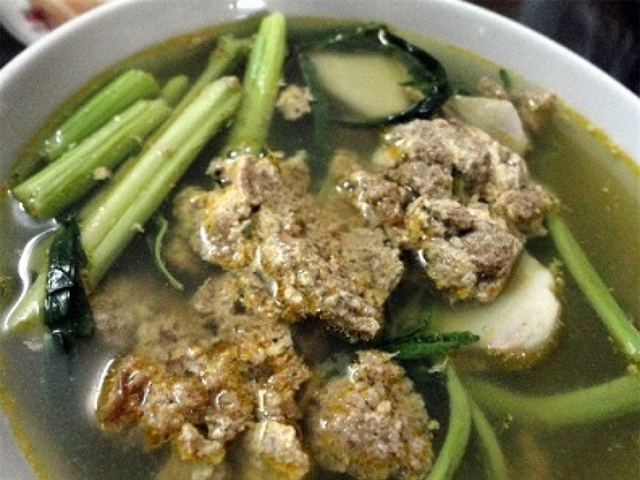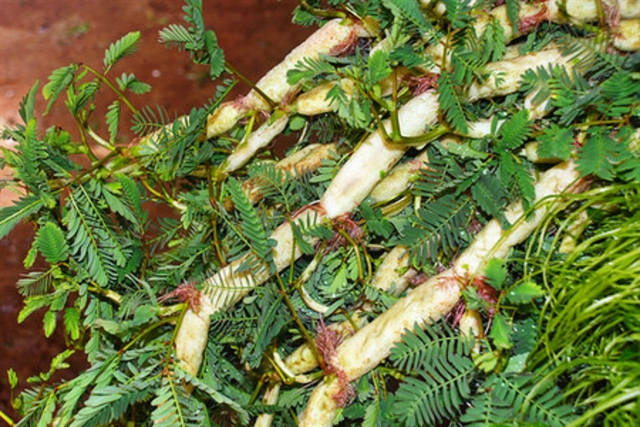Thanh Hà
Taro cooked with pork ribs and water morning glory (locally known as canh sườn khoai sọ rau muống) and crab soup cooked with taro and vegetables (canh cua khoai sọ rau rút) are traditional, frugal dishes.
Local taro is very familiar to Vietnamese people. It is mainly grown in the country’s low- and mid-land regions. It is rich in fiber, starch and minerals that are very good for health, according to herbalist Nguyễn Văn Tuất from the Hưng Yên Province’s Traditional Medicines Centre.

Local taro soup with pork ribs and water morning glory has become a beloved dish. Photo dienmayxanh.com
“It helps to stabilise blood pressure and is very good for the cardiovascular system,” he said, adding that it is a great meal for elderly people.
I often cook the soup once or twice a week instead of rice to reduce my cholesterol as advised by my doctor.
To make the soup tastier, I often wake up early in the morning to go to a market near my house in Hà Nội’s Kim Ngưu Ward to buy fresh ingredients.

To make the soup tastier, the taro should be rough, and you need fresh pork ribs, onions and water morning glory. Photo dienmayxanh.com
The ingredients include pork ribs: 250gr, taro 500gr, water morning glory 100gr, purple onion, fresh onion, 20gr, fish sauce 1 tablespoon, cooking oil 1 tablespoon, salt, broth mix, sugar and pepper.
I still remember my mother advised me on how to choose quality taro. “You should choose small taro with similar size and rough skin to ensure that they are soft,” she said.
One of the important steps is to clean the pork ribs carefully and soak them in lightly salted water for 2-3 minutes before parboiling them for another 3 minutes and cleaning them again with cold water.

Taro with crab soup and veggies (water mimosa and morning glory) is also a popular dish for locals. Photo vietgiaitri.com
The next step is to marinate the ribs with these above-mention spices for 15-20 minutes while peeling the taro and cutting them.
The water morning glory is cut into two parts with the leaves while mincing the purple onions and cutting the fresh onion into pieces of 3cm each.
The last step is to place a pot over medium heat, pouring 1 tablespoon cooking oil in, and then fry the minced onions for a while and put the ribs in the pot before pouring 700ml of water in the pot and stewing it for 30 minutes over a light fire before putting taro and water morning glory in and to continue cooking it for 10 minutes.

Vegetables are very tasty when cooked with taro and crab soup. Photo thuocchuabenh.vn
The dish’s delicious and savoury smell fills the kitchen and my husband asks me to serve him a bowl immediately.
The ribs, taro and water morning glory are sweet and soft with a buttery taste. The soup is particularly tasty with flavour from the mixed ingredients of onions, pepper and chili.
“I enjoy it so much,” he said, asking if I cook the soup more than twice a week.
Apart from the above-mention soup, I sometimes cook canh cua (crab soup) khoai sọ rau rút (water mimosa) to cool down in summer.
My aunt in Nghệ An’s Quỳnh Đôi Village, where the temperature is often very high at 40-42 C in summer, says most villagers cook the soup daily because they consider it a very good traditional medicine.
These soups have existed in Việt Nam for a long time. They are so tasty and nutritious that locals call them specialties. VNS